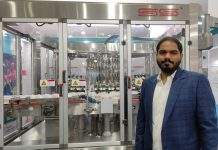
Liquid pharmaceutical manufacturers operate under great scrutiny and must set high standards of product quality. In this first column of a three-part series on product packaging quality, Jürgen Kress, general manager for checkweighing and vision inspection, Mettler-Toledo Product Inspection, outlines how sophisticated weighing technology helps ensure that liquid pharma products are safe for consumers and compliant with regulations.

It’s no exaggeration to say that quality assurance in liquid pharmaceuticals is a matter of life and death – give a patient too much or too little of a dosage, and the results might prove fatal. Such potential consequences are bound to keep liquid pharmaceutical manufacturers on their toes. Their responsibility is to drive high standards in product quality, and to maintain these standards through the filling and packaging processes that ultimately deliver the finished product – be it a bottle, vial, ampule, or other vessel – to the patient or health sector organization that will use it.
The technology solution
The solution for liquid pharma manufacturers lies is technical automation. Product inspection systems can perform the required technical tasks, in a fail-safe manner, and at the production speeds that manufacturers need to operate at to be profitable. In this specific field, an advanced checkweigher is the best option to check that dosage sizes are correct within primary packaging. The system must be capable of extremely accurate weighing and of careful product handling. These products are very often small, light, fragile, and, in the case of bottles, if not securely supported on the conveyor belt, are liable to tip over during processing. If a container breaks, there is spillage and possible glass fragments that can cause a line to shut down for clean-up, along with waste from the affected products on the line.
Getting the sensitivity correct
A checkweighing system based on high-performance electromagnetic force restoration (EMFR) load cells has the required level of sensitivity to work with such lightweight products. It is not, however, just that the dosage amount might be under- or over-filled; there is also the issue of whether the bottles or vials themselves are of a uniform weight when empty. Even slight fluctuations in the tare weight of the vessel can have a profound impact on the gross weight of the product once filled. Therefore, each individual bottle’s tare weight must be determined first, so that the correct dosage size leads to a predicted gross weight of the product.
If fragile glass bottles and vials are not handled carefully during processing, they may break, leading to machine downtime while the problem is rectified. Therefore, checkweighers must have sophisticated product handling capabilities, including sorting and rejection mechanisms, to minimize this risk.
Optimizing productivity
This brings us to further benefits that fill level control of liquid pharma can deliver. Less downtime equals greater productivity and speed to market. Eliminating the risk of over-filling and product give-away ensures that the stock of medicine the manufacturer holds is optimized for the maximum number of bottled products, making the manufacturer more profitable. The avoidance of serious safety incidents preserves the brand’s good name in the market. All of these dimensions are of an economic benefit to the manufacturer.
Alongside this control of fill level, another key part of quality assurance is the product completeness check. This can relate not just to the liquid itself, but to other things – typically a folded leaflet with medicine information and instructions for use – that must also be included within the product packaging to meet compliance requirements. Once again, these are very lightweight components of the package, but a sensitive checkweighing system can determine whether a pack has a leaflet inside or not by detecting subtle weight differences. An additional countercheck function in checkweighers can also help to ensure that rejected products are indeed off-weight and were correctly rejected. These processes can usually be carried out without disrupting production speeds.
In summary, the checkweigher can inspect the fill level, comparing tare weights with gross weights to make sure the right dosage size has been filled. It can also identify that a packaged product has been completed with all the components that need to be included. Aside from the safety of the patient or consumer, the benefit to the liquid pharma manufacturer of product inspection being able to detect these issues before a product is shipped to market is that they can avoid the significant financial and reputational costs that are the result of product recalls.
With fill level and completeness control, however, the case for the importance of high-performance checkweighing becomes more apparent – patient safety is the main priority, but there are financial benefits for the manufacturer too.
Compliance
Then there is compliance. Product inspection systems such as checkweighers constantly gather and share production line data. This can be used to demonstrate that the manufacturer is operating in compliance with governmental regulations such as FDA 21 CFR Part 11 (which requires an audit trail of processing changes to be created and stored electronically), as well as those contractually set down by retailers.
Next steps
As supply chains have become increasingly digitalized, so the collection of data has been linked more and more to individual products, each with a unique serial code, enabling it to be instantly identified. This is critical in liquid pharmaceuticals and forms the basis of the second column in this series: Serialization and Aggregation.






